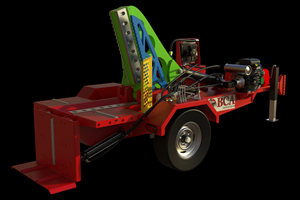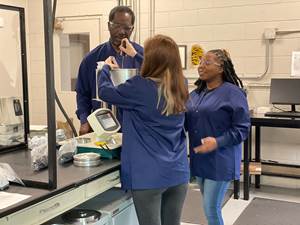Dual-Cure PUR Coatings Boost Performance Of In-Mold Decorating Films
A new version of in-mold decorating technology, developed initially for exterior auto body components, uses dual-cure coating technology to provide a paint film that is both stretchable for good thermoformability and also provides the high gloss and durability of conventional paints.
A new version of in-mold decorating technology, developed initially for exterior auto body components, uses dual-cure coating technology to provide a paint film that is both stretchable for good thermoformability and also provides the high gloss and durability of conventional paints. Developed by Bayer MaterialScience in Germany, this film-insert molding technology (which Bayer abbreviates as IMF) is said to offer both economical and environmental advantages over traditional paint lines. The focus of this development was to create hard, tough film coatings that can withstand abuse from weather, road grit, and mechanical car washes throughout the car’s life.
Bayer coating expert Dr. Jan Weikard, head of the Business Development Waterborne UV Systems sector of Bayer’s Coatings, Adhesives, and Sealants Business, says the new IMF technology is in field trials on a roof module at Daimler-Chrysler and has attracted lots of interest from other automakers. Weikard says Bayer will license its IMF dual-cure coating technology to companies that make films for in-mold decorating and market them to processors.
How it’s different
IMF processes for exterior body parts require a thermally stable plastic carrier film such as polycarbonate. The new technology is in the decorative coatings applied to the carrier film. Weikard explains, “For these painted films to have the quality and durability of paint, you need high crosslink density, which is not possible with the thermoplastics usually used in IMF. With our new version of the technology, we apply a two-layer paint to the film, which includes a dual-cure, thermoset polyurethane coating.”
In the first step, a standard flexible base coat that has the decorative color and/or metallic effect is applied to the film. This is followed by application of a proprietary uv-curable PUR clear coat, which is highly crosslinkable and affords the film excellent chemical resistance, mechanical strength, and high gloss that can match body paint.
The key here is that the drying and hardening of the paint systems is performed in two different steps. First, as the base coat and clear coat are applied to the carrier film, each is dried with heat in an ambient-air oven. This partial curing leaves the paint film flexible enough to be stretched through thermoforming without cracking. Says Weikard, “In this drying step, you have a PUR reaction in the top coat that builds long PUR chains that are still thermoformable, but there is no crosslinking yet.” This is the form in which the IMF films would usually be supplied to processors.
After thermoforming, the processor would crosslink and harden the clear coat with exposure to standard high-energy uv lamps. “The relatively low-molecular-weight PUR oligomers are dual-functional in that there are additional acrylic double bonds that allow for the needed high crosslinking to take place under uv radiation.” Now fully cured, the preformed paint films can then be placed in a mold and backed up by injection molding with thermoplastics or by RIM polyurethane.
Potential applications
Bayer’s Weikard says fenders are a key target application, because many automakers want to get away from using painted SMC. “The painted film could be used with SMC or RIM urethane,” he ventures. Other likely exterior components are rocker panels and, farther down the road, bumpers.
Non-automotive applications that also seem particularly attractive for the IMF technology, are communications devices, computers, and consumer electronics. Says Weikard, “Insert film molding is already getting use in such applications, but we think we offer a new version that could be more economical for high-end PDAs and cell phones.”
Related Content
Automation in Thermoforming on the Rise
Equipment suppliers’ latest innovations exemplify this trend driven by factors such as labor shortages, higher-speed thermoformers and tighter quality control.
Read MorePortable Alligator Shear for Size Reduction of Oversized Plastic Scrap
BCA Industries’ PGS100 hydraulic shear can quickly cut oversized plastic items into smaller pieces for easier shredding.
Read MoreCan Plastic Recyclates be Welded Ultrasonically?
What is possible with ultrasound? Will the result with recycled plastics material actually be worse than with standard material? Do we have to adapt our technology?
Read MoreSD Polymers: 'One-Stop Solution for Mechanical Recycling'
‘Passionate’ recycler invests in people and technology to meet commitment to innovative, sustainable solutions for its processor customers.
Read MoreRead Next
How Polymer Melts in Single-Screw Extruders
Understanding how polymer melts in a single-screw extruder could help you optimize your screw design to eliminate defect-causing solid polymer fragments.
Read MoreTroubleshooting Screw and Barrel Wear in Extrusion
Extruder screws and barrels will wear over time. If you are seeing a reduction in specific rate and higher discharge temperatures, wear is the likely culprit.
Read More























